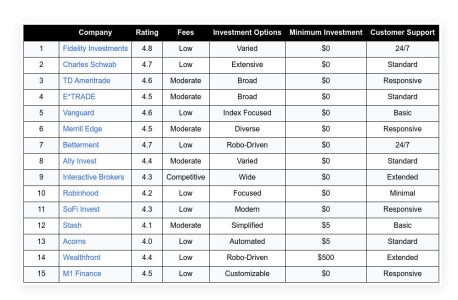What is the key to financial independence? Well, it’s not the amount of money you have. It’s how you spend your money.
The reason? In order to create and maintain wealth, you should live below your means, as well as avoid debt. It is well known among millionaires that spending less than you earn opens the door to more opportunities. Your money can be invested, saved, or donated to a charity of your choice. In a perfect world, you would be able to do all three.
And, that’s where Jim Rohn’s top piece of financial advice enters the ring.
Table of Contents
ToggleThe 70/30 Rule
For those who are unfamiliar, Jim Rohn is an entrepreneur, author, and motivational speaker. As a guideline for spending, saving, investing, and donating the 70/30 rule can be used.
Why can this be effective? The biggest hurdle for most people is living on 70% of their income after taxes, which includes all necessities and luxuries. An additional 30% is allocated for investments, savings, and charities.
In short, getting your spending under control and committing to a budget is necessary if you live on less than you make. You can’t save, invest, pay off debt,or give to causes you care about when you live paycheck to paycheck. Again, living paycheck-to-paycheck is not always the result of insufficient income.
In a Willis Towers Watson survey conducted in 2022, 36% of six-figure earners lived paycheck-to-paycheck, a percentage that has doubled since 2019. In addition to record inflation, a lack of a sound money management strategy may also be contributing to the problem.
Money can easily get spent without a plan when you spend without planning and you don’t get paid until the next month’s income arrives. Even better? Eventually, this becomes a habit.
According to Thomas Corley, who studied the daily habits of more than 350 rich and poor people for five years, self-made millionaires make saving a habit. Early savings will help you accumulate more wealth. During their pre-millionaire years, 94% of the self-made millionaires in my study developed the habit of saving 20% of their income.
Thanks to Jim Rohn’s 70% Budget Rule, you can break free from the paycheck-to-paycheck cycle. Furthermore, you can use this advice right away to save, invest, pay off debt, and donate.
Breaking Down the 70% Budget Rule
In spite of the fact that this rule seems pretty straightforward, let’s break it even further so that you can finally set up a budget that works for you. However, to simplify this rule further, it has been modified into the 70/20/10 rule.
In this case, your take-home pay is divided into three buckets based on a specific percentage:
- The majority of your income, 70% goes towards monthly bills and everyday expenses.
- 20% goes towards saving and investing.
- 10% goes towards debt repayment or donation.
The goal of this ratio is to invest in your long-term financial well-being as well as your current lifestyle. Plus, the 70/20/10 rule can be adjusted according to your specific financial situation.
Use 70% of Your Income for Monthly Spending
Regardless of what variation you use, this part is non-negotiable. This means spending no more than 70% of our monthly income on living expenses. But what does that really mean?
There are two types of living expenses:
- Essentials like food, rent, and utilities.
- Discretionary, such as a pair of new shoes, eating out, and entertainment.
The 70% rule is a good guideline for keeping enough money for essentials and discretionary spending so that we can afford everything we need and want in life. You can use the remaining 30% for saving more money and repaying debt, whether it’s credit card debt, utility bills that are late, or other personal debt.
The difference between fixed and variable expenses.
Budgeting requires understanding monthly expenses and differentiating between fixed and variable expenses.
Fixed expenses.
A fixed expense is one that remains the same on a monthly basis. Some common examples include:
- A mortgage or rent payment
- Utilities — are typically variable, but some utility companies also offer programs that estimate your average monthly cost so you pay more regularly
- Car payment
- Insurance premiums
- Subscriptions, such as streaming services or magazines
- Membership fees, professional organizations, or gyms
- Child care — you can add more for extra babysitting nights if necessary
Variable expenses.
Variable expenses, on the other hand, are those that change month to month, such as:
- Utilities
- Groceries
- Gas
- Dining out
- Entertainment
- Travel
- Gifts
When managing a budget, it is important to take both types of expenses into account since they can eat up a huge chunk of it. As such, in order to become a better money manager, you should be aware of fixed versus variable expenses on a monthly basis.
You Should Save 20% of Your Income
Saving is an essential part of everyone’s budget for monthly living expenses and unforeseen events. This is why you plan to save 20% of your total income in the 70% budget. This is an excellent goal, especially since only 43% of U.S. adults would use their savings to pay for an unexpected emergency expense.
You may want to consider the following personal finance priorities:
- Emergency fund. In case of an emergency, you can draw from your emergency fund. This is usually enough to cover basic living expenses for three to six months. But, start with a smaller amount like $1,000.
- Sinking funds. These are for bigger expenses like car repairs that can arise occasionally.
- Retirement savings. Some of the most common retirement accounts are 401(k), 403(b), and 457(b). Roth IRAs and traditional IRAs are also options.
- Savings plans for college for your children through 529 plans
- Start-up capital for a business.
- An investment in stocks and bonds
- Real estate investing, such as a real estate investment trust, or REIT.
Building up your emergency fund should be your top priority if you have little to no money in your savings account for emergencies. As you pay bills, variable expenses may arise, so saving is also essential.
The good news is that you can save money for multiple saving goals simultaneously. For example, the thought of retiring may seem far off. However, it’s best to start early to benefit from compounding.
Set Aside 10% of Your Income for Debt repayment or Charitable Giving
You will pay off debt or donate (or both) the remaining 10%. It might be a good idea to:
Paying off debts.
If you have debt, you could include it within this 10% category based on your financial situation. You are not limited to spending less than 10% of your income on loan payments, however. As you may recall, student loans and other debts were included in the 70% category of expenses.
The minimum required payments on your student loans and other debts should be included in your budget. You can also send extra money to speed up the process of getting out of debt if the minimum payments don’t work.
This final 10% can be calculated in any way you like. It may be more beneficial to focus on paying off your debt rather than giving. It’s especially important to pay off high-interest debt quickly if it comes with a high-interest rate.
There are two popular options when tackling your debt:
- Debt snowball method. No matter what the interest rate is, you start with the smallest debt.
- Debt avalanche method. As an alternative, you can pay off the debt with the highest interest rate first.
You must remember that your minimum debt payments come out of your spending category when using the 70/20/10 budget. To reduce debt faster, extra payments are required in the extra 10% category.
Sharing or giving.
Giving to something that is meaningful to you can be part of your final 10% category. You can give regularly to the same organization every month, or you may wish to vary your giving, like:
- Giving or tithing to a religious organization.
- Contributing to charitable causes.
- Donating to your college alma mater
FAQs
1. What is the 70/30 rule?
According to Jim Rohn, who is an author and motivational speaker, you should live on 70% of your income and save 30%.
The 70% includes all the necessities and desires you may have – housing, utilities, food, and clothes. It also includes small pleasures and even luxuries like a vacation or dining out.
How about the remaining 30%? He recommends an even split between saving, investing, and donating.
2. Why use budget percentages?
Rather than allocating a set dollar amount to each of your expenses, you should focus on percentages when creating your budget. The reason? Using a budget percentage, you can see how your income is spent on a monthly basis. As a result, identifying areas where spending may need to be adjusted is easier.
Furthermore, a percentage-based budget ensures that every dollar you earn has a purpose. When you feel that you are not meeting your financial goals, this is especially important.
3. If you’re over the 70% budget rule, what should you do?
Do you exceed the 70% guideline? Don’t panic. Begin cutting your expenses as soon as possible.
Of course, that’s easier said than done. But, to get started, take a hard look at your budget. From there, remove unnecessary costs that are “want” that you could eliminate on a monthly basis. It could include dining out, shopping for new clothes, and subscriptions to streaming services. Continue deleting until you reach 70%.
If you still cannot fit it within 70%, what are your options? Be honest with yourself and take action. The solution may be as drastic as selling your vehicle or moving to a cheaper house.
There are other options, such as asking for a raise or switching jobs. If you want to introduce multiple income streams, you might consider starting a side hustle.
4. What are the advantages of the 70% budget?
Budget rules such as 70/20/10 offer some great benefits.
The method is pretty simple to follow. By dividing your take-home pay into these three categories, you can spend how you like without worrying that you’ll derail your savings or debt repayment plans.
Although this budget has some structure, it isn’t overly restrictive or strict. Each dollar doesn’t have to be spent exactly the same way.
Moreover, this budgeting style puts your financial future first. Building an emergency fund, investing for retirement, paying off debt, and giving back to others will all be part of your daily routine as well.
5. What are the disadvantages of the 70% budget?
This budgeting method may prove difficult to maintain due to its inability to prioritize personal financial needs and wants over unexpected expenses.
People may use credit cards to buy items they cannot afford when they start out with such a budget. Due to interest payments, this could lead to overburdening with debt over time.
Buying a house or financing college tuition may not be possible with a 70/20/10 budget strategy’s fixed percentage model.
Retirement goals and emergency funds can also be affected by a limited number of long-term savings.
When this model is relied upon too heavily, there can be unintended consequences. If not monitored carefully, constantly depleting savings creates a cycle where you can’t save for retirement or necessities.














